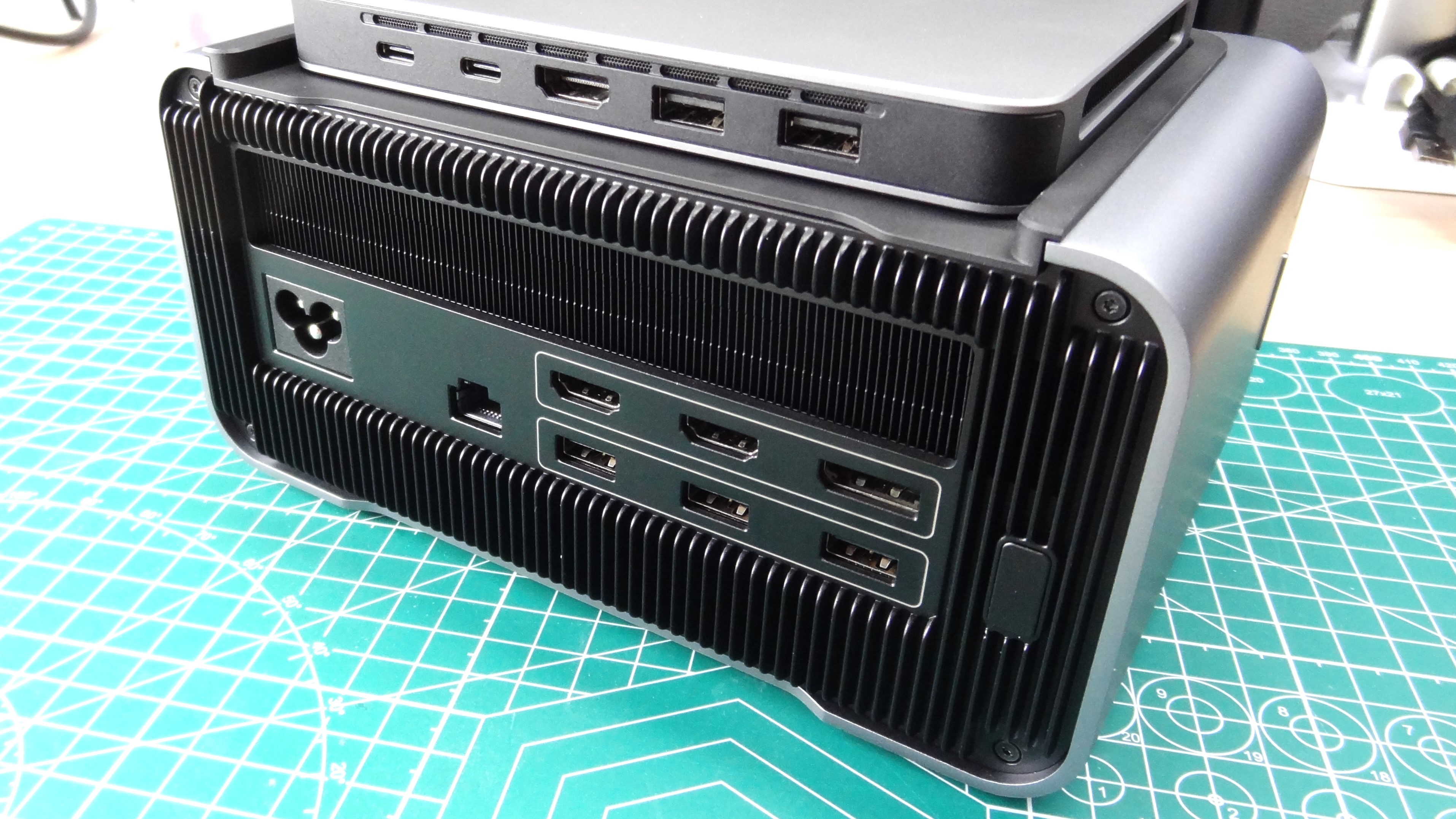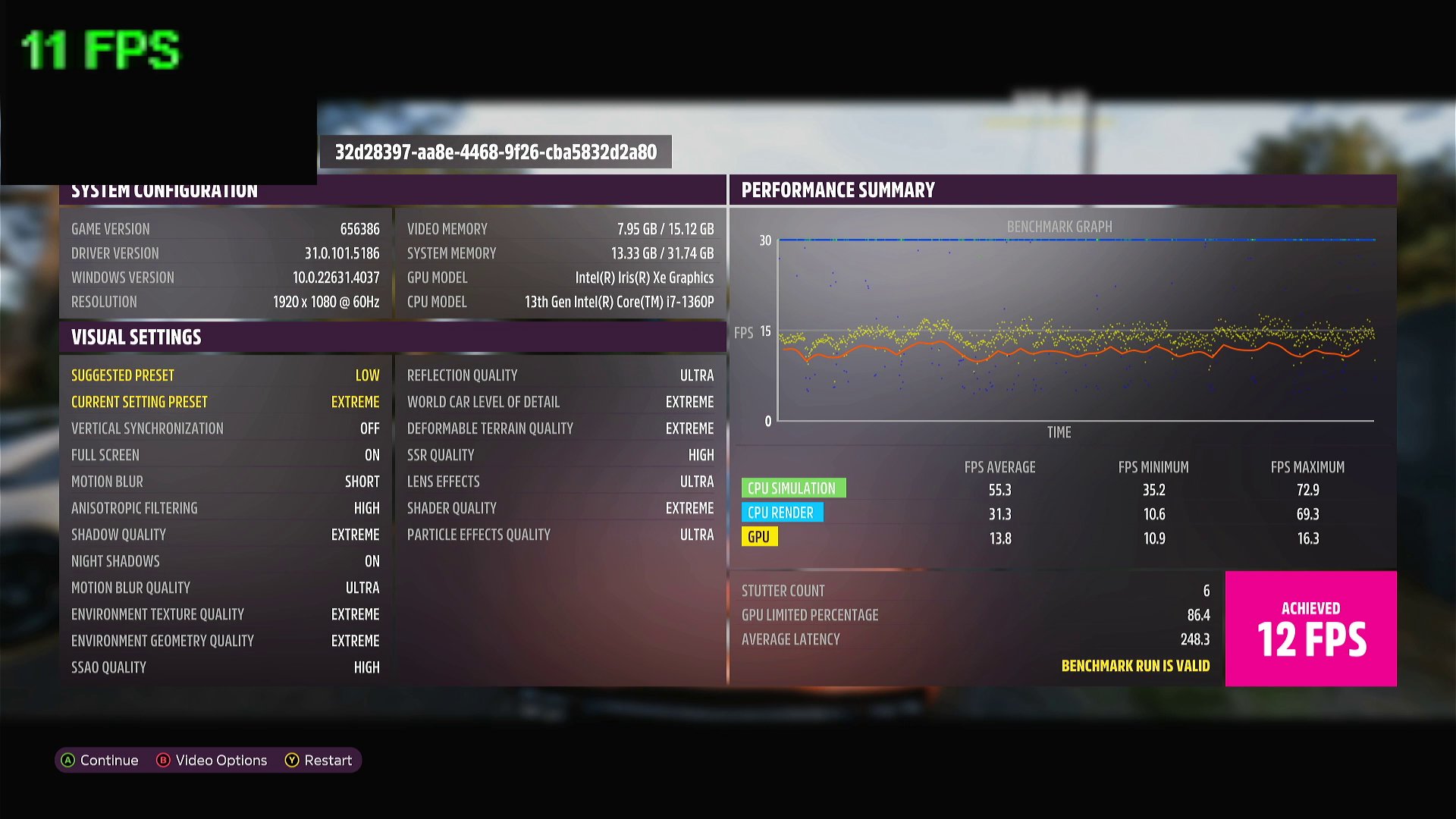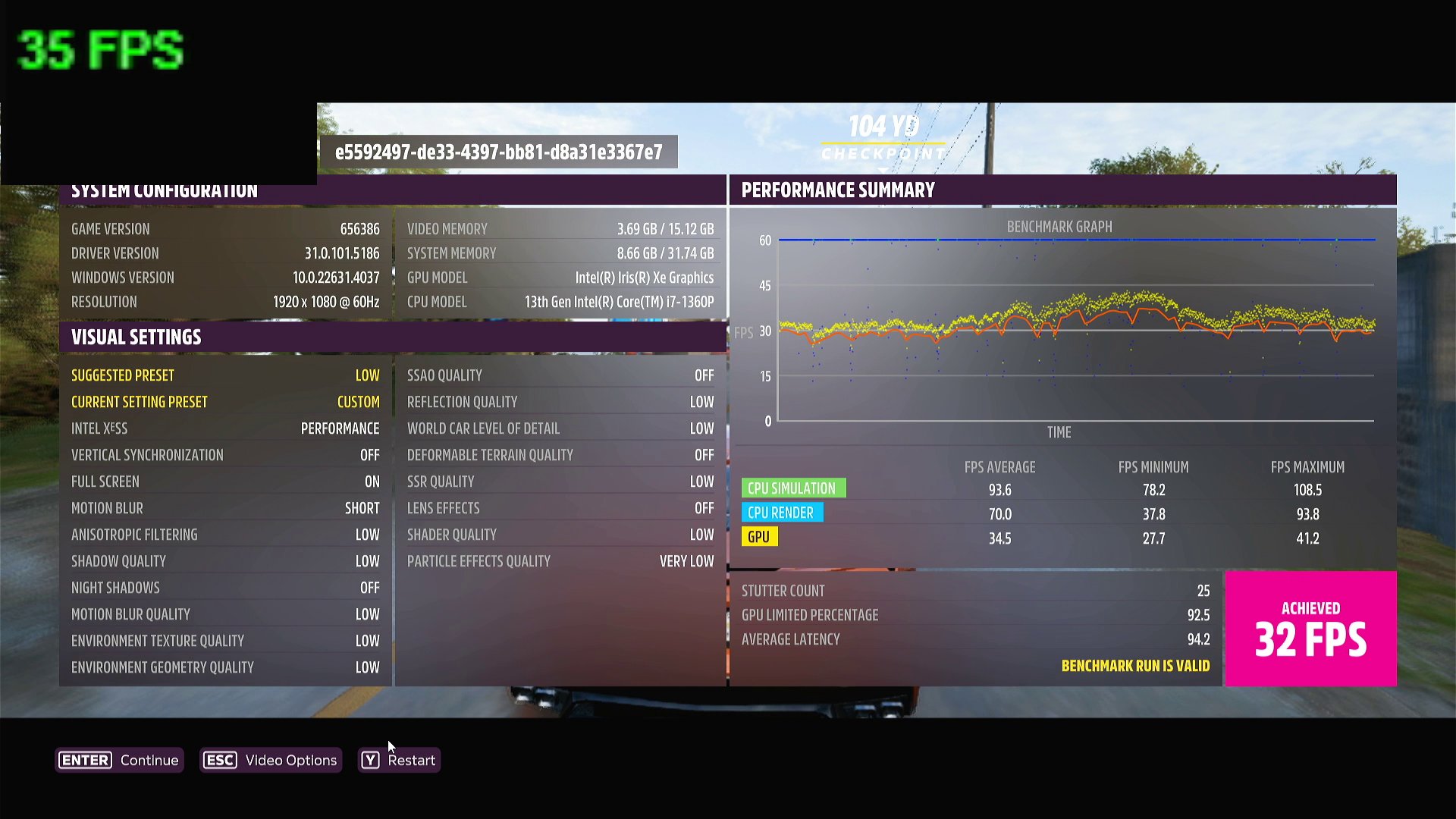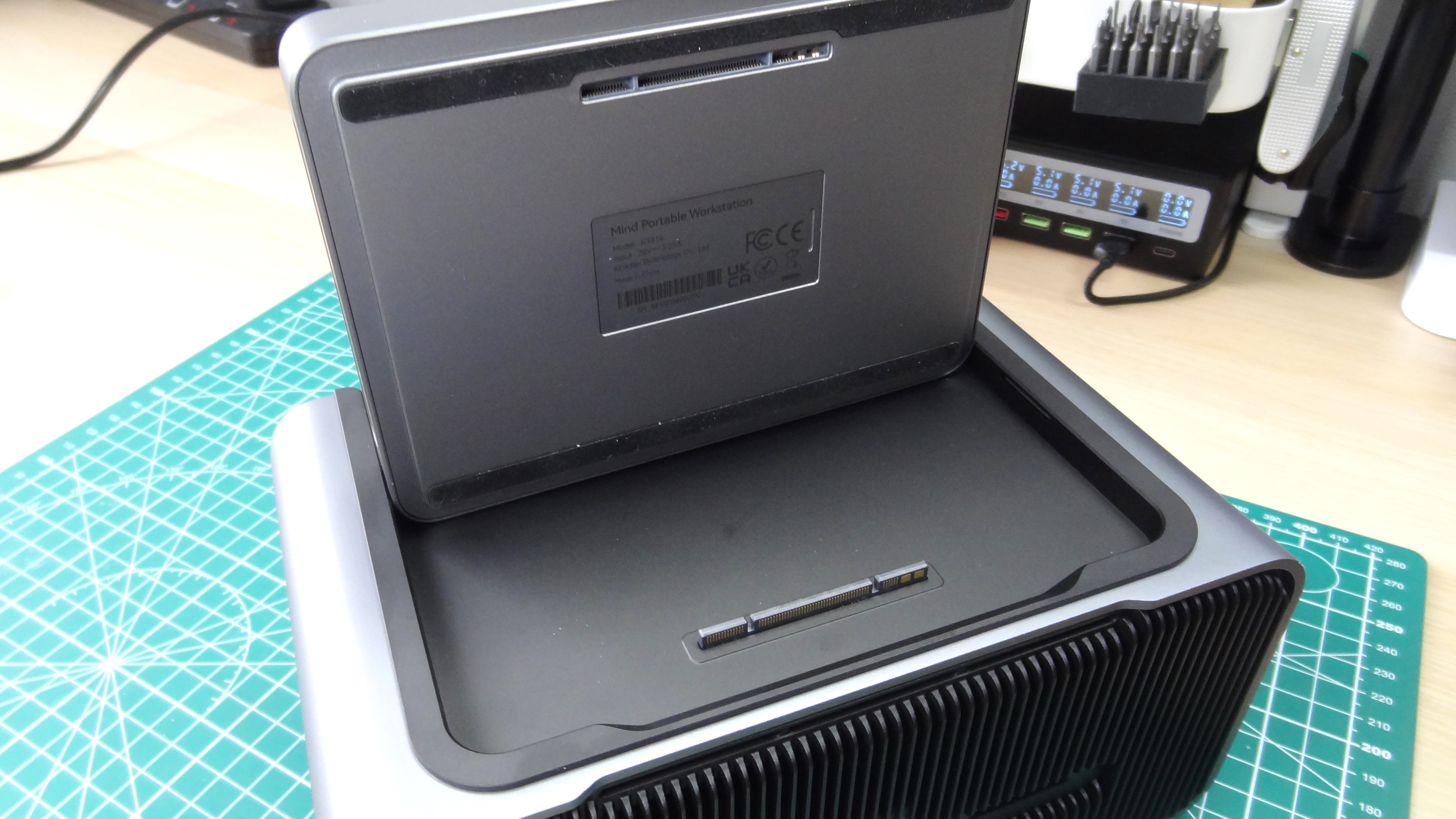Tom's Hardware Verdict
A great piece of kit for those who already own the Khadas Mind, or who need an external GPU dock without the size or clutter of the alternatives. You do pay for the aesthetic and the convenience though.
Pros
- +
Interesting concept
- +
Great looks
- +
Excellent cooling
- +
Great performance
- +
Mess-free connection
Cons
- -
Expensive
- -
GPU cannot be upgraded
- -
Fan is a little “whooshy”
Why you can trust Tom's Hardware
Chances are that if you are reading this, then you also read, and perhaps bought into the Khadas Mind concept. The Khadas Mind is a $799 to $1099 ($599 and $799 at the time of the original review) single board computer (SBC) powered by either an i5 or i7 13th Gen Raptor Lake CPU. Inside the carefully milled aluminum chassis was 32GB of DDR5 RAM, the aforementioned CPU which also contained an Intel Iris Xe GPU with 96 execution units. It could game, but you had to manage your expectations as triple-A gaming was only barely possible.
The $999 Khadas Mind Graphics is essentially an Nvidia RTX 4060 Ti in a matching aluminum case with its own integrated 300W GaN (Gallium nitride) PSU. Connection to the Khadas Mind is via the dedicated Mind-Link connector, so no messy cables or hacky practices. It can also be used as an external GPU via a USB4 / Thunderbolt 4 connection.
Is the Khadas Mind Graphics worthy of your hard earned dollars? What can you use it for, and why not just buy the best gaming laptop instead? Let's find out.
Khadas Mind Graphics Specifications
| GPU | Nvidia RTX 4060 Ti 8GB |
| eGPU Connection | “Mind Link” or USB4 (eGPU and Charging) 8-lane PCIe 4.0 connection, limited to 4-lane by 13th Gen Intel CPU) |
| Ports | 1 x USB Type C 3 x USB 3 Type A 2 x HDMI 1 x Displayport 1 x 2.5 Gbps Ethernet 1 x SD Card Reader 1 x 3.5mm Headphone Jack |
| Audio | Dual Speakers Microphone Array |
| Extra Features | RGB Lighting, Fingerprint Reader, Volume Controls |
| Power | 300W Gallium nitride PSU |
| Dimensions | 199 x 133 x 100 mm |
| Weight | 2.7 KG (6 lbs) |
Khadas Mind Graphics Aesthetics





This 2.7 KG slab of aluminum is relatively small, only occupying a small fraction of the desk, but it does feel weighty in the hand. Keep this in mind when moving the kit around.. The space gray aluminum matches the Khadas Mind, and the black fins at the front and rear, used for air cooling the RTX 4060 Ti, provides a sports car aesthetic.Speaking of cooling, under heavy loads we can hear the whoosh of the fan when we are sat at our desk. In the living room when playing CyberPunk 2077 we could hear the fan from 8 feet away during quieter moments. It wasn’t intrusive, but we could still hear it in the background.
The front is rather sparse, with the audio jack, USB C port and SD card slot being the only ports. A single white LED sits above the Khadas logo, “breathing” to indicate that the unit has power.
Around the back is where the myriad of HDMI, DisplayPort, USB and Ethernet ports reside, keeping the build clean and the cables off your desk. Power to the 300W GaN PSU arrives via a C5 “Mickey Mouse / Clover leaf” cable, converting the AC into the DC necessary for the Khadas and the RTX 4060 Ti to operate. The integrated PSU is a really nice touch and adds to the clean look and feel.
Installing Khadas Mind Graphics


The installation steps were simple, on paper. But it seems that my install differed as I did not have the Mind App pre-installed. The steps state to uninstall any older versions of the app before installing the newer app. As there was no app to uninstall, I installed the latest version of the Mind App and continued following the instructions.
Get Tom's Hardware's best news and in-depth reviews, straight to your inbox.
I hit another hiccup. The Mind App handles system updates, drivers and also BIOS updates. The instructions advised me to update the BIOS to version 1.1. After repeated attempts to force the app to find and update the BIOS, it stated that there were no new BIOS updates. This is despite my review unit claiming to be many versions behind. I persevered and completed the installation, and the RTX 4060 Ti was detected and the Khadas Mind App triggered the driver download.
Mechanically the installation is super simple. Requiring that we connect the Khadas Mind to the Graphics dock via the Mind Link connector. That’s it. No rats nest of cables and no dodgy PSU shenanigans, unlike the time that I connected an RTX 3060 Ti to a LattePanda Sigma via Oculink and a 550W PSU. The only issue with this approach is that you are “stuck” with a 4060 Ti. Unlike other eGPUs which are essentially ITX cases with a PSU and a GPU, we couldn’t take the unit apart and fit an RTX 4090.
Mind Graphics Performance
















| Architecture | AD106 Revision A1 |
| Process Technology | TSMC 4N (5 nm) |
| Die Size (mm^2) | 188 |
| VRAM (GB) | 8 |
| Memory Type | GDDR6 (Hynix) |
| Clock Speeds | GPU 2310MHz, Memory 2250 MHz, Boost 2535 MHz |
| PCIe Bus Interface | PCIe 4.0 x8 (Currently support x4 due to 13th Gen Intel Core CPU, future Intel Core Ultra will offer 8-lane PCIe 5.0) |
| Tensor Cores | 136 |
| Bandwidth (GBps) | 288 |
The meat of the review is here. Inside the aluminum case lies a desktop class RTX 4060 Ti, not a mobile card, a full desktop GPU with everything that a typical RTX 4060 Ti offers. But let's get one thing straight, this is the 8GB GPU, not the later RTX 4060 Ti 16GB and that means you’ll have to lean on DLSS to get higher FPS (but that will generate latency.)
As per our senior GPU editor, Jarred Walton’s review, the RTX 4060 Ti can trade blows with the older RTX 3070 GPU, and it has potent Ada features such as ray tracing and AI. The $399 price point of the 4060 Ti also sees it replace the RTX 3060 Ti and provides more performance using less power. If you want this to play games, then it will certainly do the trick, but it does become a rather expensive gaming PC when we factor in the cost of the Khadas Mind itself. Also note that the current top spec CPU, the Intel Core i7-1360P only supports up to 4-lane PCIe 4.0. A future update to the Khadas Mind will see the Intel Core Ultra range of CPUs, which offer 8-lane PCIe 5.0, with the Khadas Mind peaking at 8-lane PCIe 4.0 bandwidth (128 GT/s) when used with the Khadas Mind Graphics.
Can the Khadas Mind Graphics game? The short answer is yes it can. For general 1080p gaming, the RTX 4060 Ti is great. We tested the games at 1080p, using the Intel Iris XE and the 4060 Ti GPUs.
| Game | GPU | FPS |
|---|---|---|
| Stray | Intel Iris XE | 23 (High Settings) 42 (Medium settings, 90% Resolution Scaling) |
| Row 1 - Cell 0 | RTX 4060 Ti | 155 (High Settings) |
| Warhammer 40,000: Boltgun | Intel Iris XE | 62 (Medium Settings) |
| Row 3 - Cell 0 | RTX 4060 Ti | 120 (High Settings) |
| Call of Duty 4: Modern Warfare | Intel Iris XE | 97 (High Settings) |
| Row 5 - Cell 0 | RTX 4060 Ti | 357 (High Settings) |
| Cyberpunk 2077 | Intel Iris XE | 12 No XeSS, 23 With XeSS |
| Row 7 - Cell 0 | RTX 4060 Ti | 81 No DLSS 149 With DLSS |
| Forza 5 | Intel Iris XE | 12 No XeSS, 32 With XeSS and Low Preset |
| Row 9 - Cell 0 | RTX 4060 Ti | 105 (Extreme) |
In the table above we have the results of the tests. Clearly the 4060 Ti wins every round, you really do get a massive bump in performance versus the Intel XE card, but that was always going to be the case. As with our previous review, the Intel Iris XE is decent enough for older games, and less intensive gaming. Seeing CyberPunk 2077 at 12FPS, and 23FPS with XeSS reminded us of playing Doom on a 486 with only 4MB or RAM. We could play it, but it wouldn’t be fun. The same for Forza 5’s 12 and 32 FPS.
The RTX 4060 TI comes into its own when playing triple A games. We get the boost in performance, and the bonus of DLSS frame generation. Yes, that introduces a little latency, something that our own Jarred Walton mentions in his review, but for many games this won’t be an issue.


We also ran a Furmark stress test on the RTX 4060 Ti. The 1080p benchmark test produced a score of 10940, and 180 FPS. The GPU reached 64 degrees Celsius and pulled 160W from the wall. How does that compare to the RTX 4070 that resides in my desktop? That achieved a score of 12738, 212 FPS. GPU core temp reached 64 degrees Celsius and it pulled 201W from the wall. Based on that, the 4060 Ti is a little slower than the 4070, obviously and it resides in a much smaller case than my Phanteks P360A. But it keeps its cool, and it has enough performance for most triple A games.
If you want to use the Khadas Mind Graphics as a gaming rig, then you can. Its tiny size and low noise means it won’t dominate your living room like a desktop PC would. The lack of RGB also works to your advantage, the single, solitary LED being the only blinky to distract you.
The RTX 4060 Ti is not just for gamers, it can also be used with intensive applications such as CAD, video editing and other creative tools. DaVinci Resolve supports using Nvidia GPUs for faster video encoding, but this is only available in the paid version. The RTX 4060 Ti offers more computational power for AI tasks. The restriction though is the memory. As our senior GPU editor Jarred Walton says in his review of the 4060 Ti, “Many large language models (LLMs) benefit from lots of memory, and 8GB isn't enough for even some "medium" sized models. So the 4060 Ti 16GB will probably find some uptake by AI researchers just because of its memory capacity.”
If you need the power of a RTX 4060 Ti and an Intel Raptor Lake CPU, then the Khadas Mind Graphics is a good package. You can get gaming laptops of a similar specification for around the same price as the Khadas Mind Graphics package but the Khadas Mind isn’t aiming for the laptop market, rather the high performance mini PC market.

The Khadas Mind Graphics also offers a USB 4 / Thunderbolt 3 / 4 interface for laptops supporting the protocol. You’ll get less performance than the Mind Link connection, but it is there should you need it.
Khadas Mind Graphics Extra Features
Inside the aluminum chassis lies a few extra features not found on eGPU docks. First of all we have a speaker. It offers decent sound reproduction, but it can distort at loud volumes, especially the punk band that we played. For more bassy audio, such as 1990s trip-hop, the sound is a little better, but it has an “airy” feel which loses some presence. Keeping with the theme of audio, the onboard microphone array is usable, but the audio quality sounds like a speakerphone conversation in a car while it is waiting in traffic. And we’re walking down the street trying not to listen in. The audio is muffled, and the onboard fan doesn’t help, providing a background noise.
The fingerprint sensor is useful. Located to the left side of the case, just above the volume controls, the fingerprint sensor is Windows Hello compatible, and doubles as a mute button.
Around the back is a 2.5Gb Ethernet port, and while we were unable to test the 2.5Gb aspect, we were able to test all the way to 1Gb and can confirm that performance maxed out our network connection at 942Mb/s (117.5 MB/s).
Just above the Khadas logo is a glowing white shape, something that the Mind App claims that we can control, but no amount of clicking colors triggered a color change. Not a deal breaker or an issue, after all it is just a single LED.
Who is the Khadas Mind Graphics For?
Gamers, creatives and those who require higher performance CPU and GPUs for AI and machine learning projects will benefit from the Khadas Mind Graphics bundle, but it is a large investment.
Bottom Line
If you bought into the Khadas product range with the Khadas Mind and you now need (or want) more GPU power, then the Khadas Mind Graphics is for you. The bundle isn’t cheap, coming in at $2,098. For the money you do get a stunning looking setup, it looks great on the desk and under the television, but you do need to weigh up the pros and cons before making the investment. Just like we said in our previous review, we love the idea of the Khadas Mind. It's versatile, portable and innovative. But all of those features are still measured in dollars.

Les Pounder is an associate editor at Tom's Hardware. He is a creative technologist and for seven years has created projects to educate and inspire minds both young and old. He has worked with the Raspberry Pi Foundation to write and deliver their teacher training program "Picademy".

